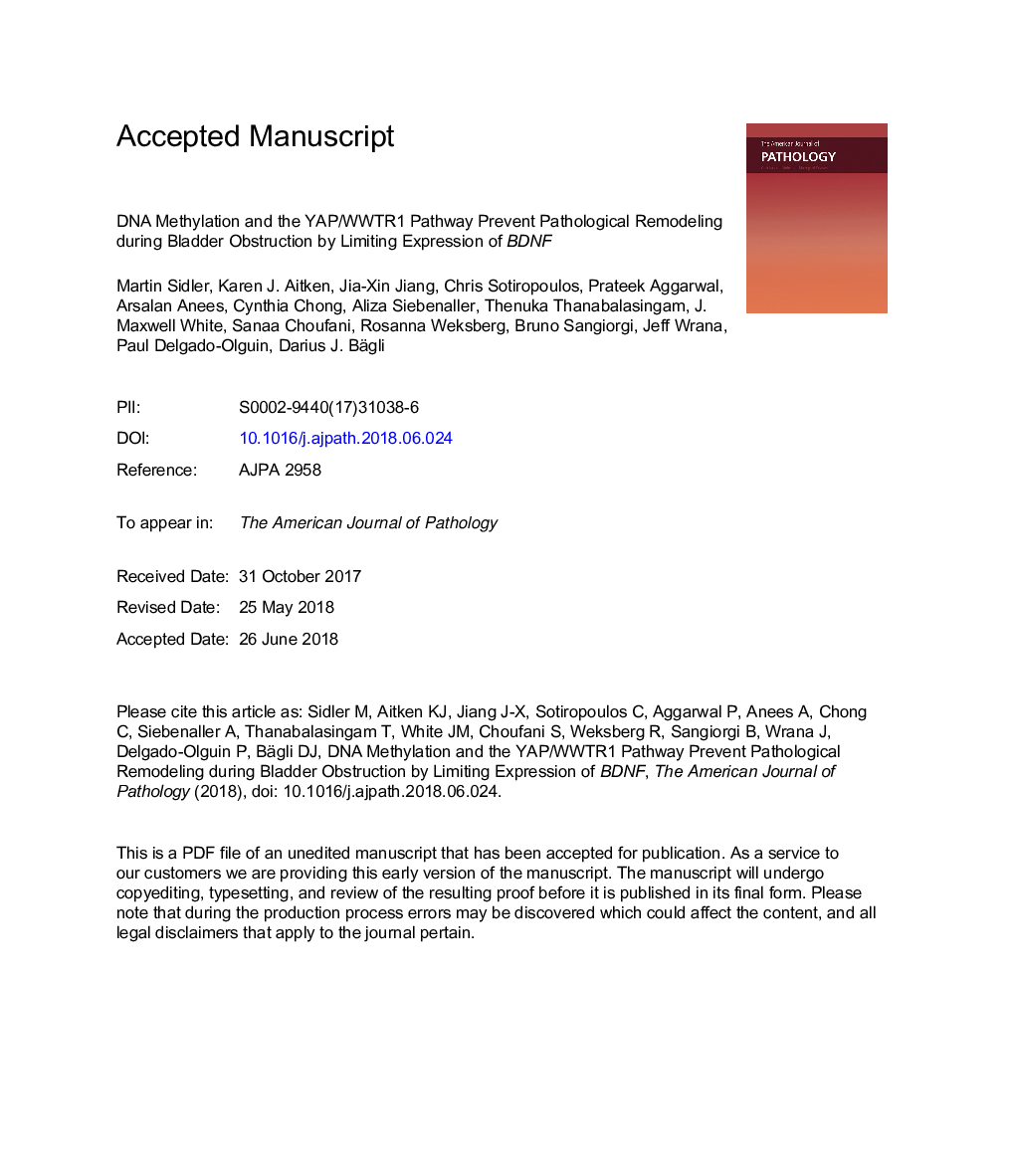| Article ID | Journal | Published Year | Pages | File Type |
|---|---|---|---|---|
| 10212853 | The American Journal of Pathology | 2018 | 46 Pages |
Abstract
Chronic bladder obstruction and bladder smooth muscle cell (SMC) stretch provide fibrotic and mechanical environments that can lead to epigenetic change. Therefore, we examined the role of DNA methylation in bladder pathology and transcriptional control. Sprague-Dawley female rats underwent partial bladder obstruction by ligation of a silk suture around the proximal urethra next to a 0.9-mm steel rod. Sham operation comprised passing the suture around the urethra. After 2 weeks, rats were randomized to normal saline or DNA methyltransferase inhibitor, 5-aza-2-deoxycytidine (DAC) at 1 mg/kg, three times/week intraperitoneally. After 6 weeks, bladders were weighed and divided for histology and RNA analysis by high-throughput real-time quantitative PCR arrays. DAC treatment during obstruction in vivo profoundly augmented brain-derived neurotrophic factor (BDNF) expression compared with the obstruction with vehicle group, which was statistically correlated with pathophysiologic parameters. BDNF, cysteine rich angiogenic inducer 61 (CYR61), and connective tissue growth factor (CTGF) expression clustered tightly together using Pearson's correlation analysis. Their promoters were associated with the TEA domain family member 1 (TEAD1) and Yes-associated protein 1/WW domain containing transcription regulator 1 pathways. Interestingly, DAC treatment increased BDNF expression in bladder SMCs (P < 0.0002). Stretch-induced BDNF was inhibited by the YAP/WWTR1 inhibitor verteporfin. Verteporfin improved the SMC phenotype (proliferative markers and SMC marker expression), in part by reducing BDNF. Expression of BDNF is limited by DNA methylation and associated with pathophysiologic changes during partial bladder outlet obstruction and SMC phenotypic change in vitro.
Related Topics
Health Sciences
Medicine and Dentistry
Cardiology and Cardiovascular Medicine
Authors
Martin Sidler, Karen J. Aitken, Jia-Xin Jiang, Chris Sotiropoulos, Prateek Aggarwal, Arsalan Anees, Cynthia Chong, Aliza Siebenaller, Thenuka Thanabalasingam, J. Maxwell White, Sanaa Choufani, Rosanna Weksberg, Bruno Sangiorgi, Jeff Wrana,
